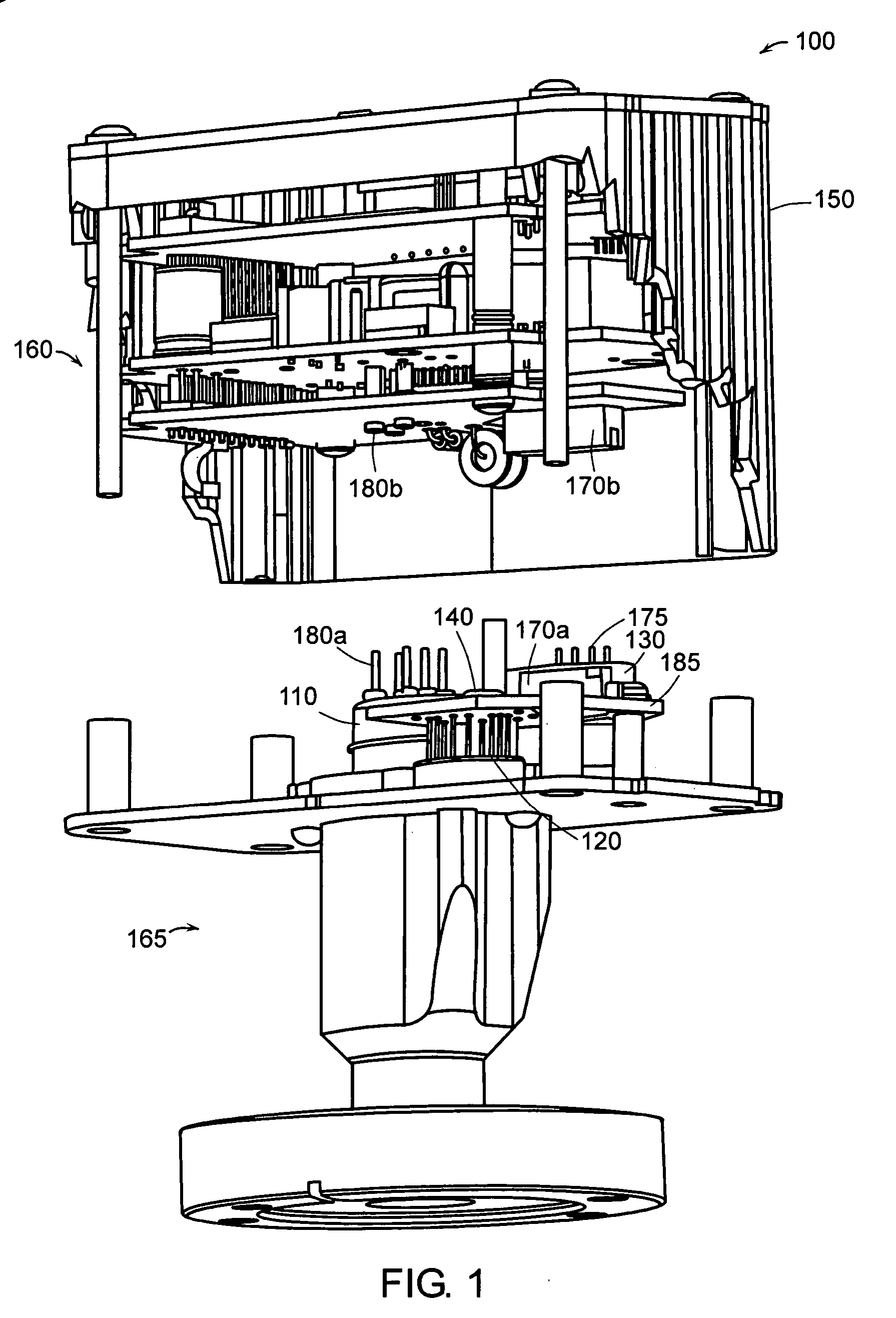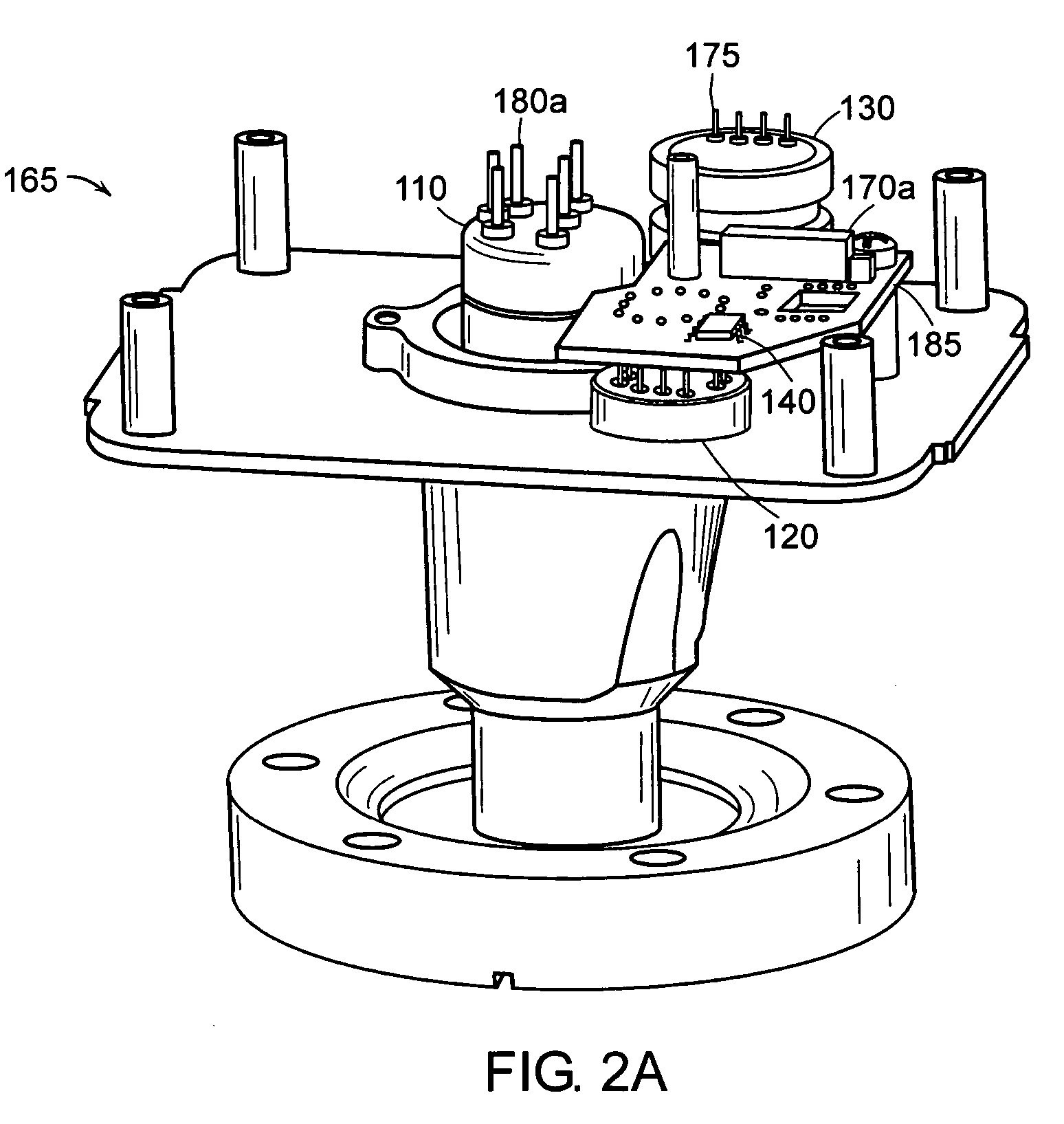Method and apparatus for storing vacuum gauge calibration parameters and measurement data on a vacuum gauge structure
a technology of vacuum gauge and calibration parameters, which is applied in the direction of vacuum gauges using ionisation effects, instruments, measurement devices, etc., can solve the problems of gauges either malfunctioning or failing, manufacturers have difficulty in determining the cause of malfunction or failure, and inaccuracy in vacuum measurements also aris
- Summary
- Abstract
- Description
- Claims
- Application Information
AI Technical Summary
Benefits of technology
Problems solved by technology
Method used
Image
Examples
Embodiment Construction
[0016] A description of preferred embodiments of the invention follows.
[0017] Referring to FIG. 1, a combination vacuum gauge system 100 in accordance with the present invention comprises a combination vacuum gauge 165 and controller electronics 160. The combination vacuum gauge 165 comprises an ionization gauge 110, a heat-loss sensor 120, a diaphragm sensor 130, and nonvolatile memory 140. The ionization gauge 110 electrically connects to the controller electronics 160 through pins 180a and sockets 180b. The heat-loss sensor 120 and the nonvolatile memory 140 are connected to a combination vacuum gauge circuit board 185 which connects to the controller electronics 160 through connectors 170a and 170b. The diaphragm sensor 130 electrically connects to the controller electronics 160 through pins 175 and a flex cable (not shown) to the connectors 170a and 170b. The controller electronics 160, when connected to the combination vacuum gauge 165, are enclosed within a housing 150.
[001...
PUM
 Login to View More
Login to View More Abstract
Description
Claims
Application Information
 Login to View More
Login to View More - R&D
- Intellectual Property
- Life Sciences
- Materials
- Tech Scout
- Unparalleled Data Quality
- Higher Quality Content
- 60% Fewer Hallucinations
Browse by: Latest US Patents, China's latest patents, Technical Efficacy Thesaurus, Application Domain, Technology Topic, Popular Technical Reports.
© 2025 PatSnap. All rights reserved.Legal|Privacy policy|Modern Slavery Act Transparency Statement|Sitemap|About US| Contact US: help@patsnap.com



